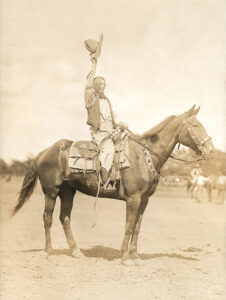| When Abraham Lincoln’s remains arrived in New York City on April 24, 1865, hundreds of thousands of its once-antagonistic citizens gathered to mourn him. Tens of thousands more assembled outside City Hall for a final look at the man few had met—but most had come to know through photographs. |
Just before the doors opened to the public, photographer Jeremiah Gurney set up his camera on a narrow catwalk high above the building’s rotunda and took this breathtaking picture of the open coffin, with Admiral Charles Davis and General Edward Townsend guarding either end. Though he had been dead nine days, Lincoln’s heavily embalmed features were still recognizable.In its own time, the picture never came to light. When Secretary of War Edwin M. Stanton learned of its existence, he ordered Maj. Gen. John A. Dix to seize and destroy all prints and negatives. Dix, however, sent one copy to Stanton, who spared it.Years later, Stanton’s son gave it to Lincoln’s former private secretary, John G. Nicolay. But not until 1952, rummaging through the Nicolay Papers in Springfield, Ill., did student Ronald Rietveld (later to become a Lincoln scholar) discover the sensational, long-lost picture—the world’s very last look at Abraham Lincoln.




